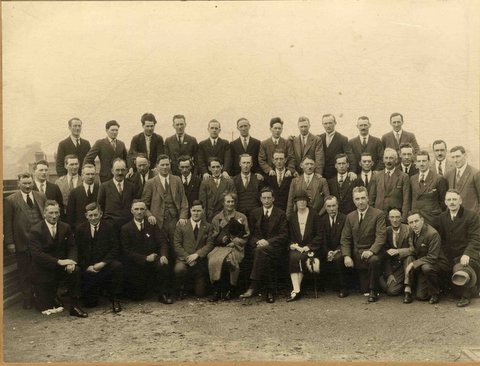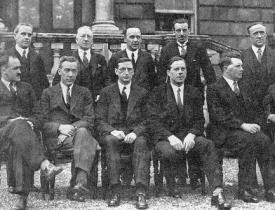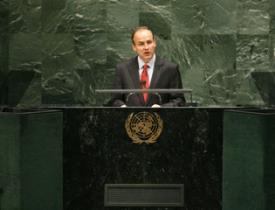The History of Fianna Fáil:
Fianna Fáil: The Republican Party:
Fianna Fáil represents the mainstream of Irish life. It is the only party which on several occasions has commanded overall majorities in Dáil Éireann.
Since its foundation on the 16th May 1926, Fianna Fáil has been the single most coherent force in Irish politics, so much so, that alternative governments have been characterised by their opposition to Fianna Fáil as their only common bond.
Electorally Fianna Fáil is second only to the Social Democrats in Sweden in its length of tenure in office.
Fianna Fáil adheres to the great democratic principle of government of the people, by the people and for the people. The party's name incorporates the words ‘The Republican Party' in its title. "Republican" stands for the unity of the island and a commitment to the historic principles of European republican philosophy, namely; liberty, equality and fraternity.
Fianna Fáil has always had a ‘can do' attitude. The Party has always been positive and never defeatist in its thinking. Fianna Fáil aims to unite all in a common identity of self-confident Irish men and women in a dynamic, vibrant, prosperous nation.
History of Fianna Fáil:
16th May 1926 - Fianna Fáil founded in the La Scala Theatre, O'Connell Street Dublin.
The 1930's:
1932 - First Fianna Fáil government led by Eamon de Valera elected. Oath of Allegiance abolished.
1937 - New constitution enacted in the Irish Free State. The British Monarch is replaced as Head of State by an elected president. The name of the state is changed to Éire (Ireland).
1938 - End of British occupation of three naval bases that had been left in British hands by the Anglo-Irish Treaty of 1921.
1939 - The Emergency - Ireland remains neutral.
The 1950's:
1958 - Programme for economic expansion published - establishes a five year plan of public investment with a target of 2% economic growth per annum.
1959 - Eamon de Valera resigns as leader of Fianna Fáil and is replaced by Seán Lemass TD.
1959 - Fianna Fáil under Lemass built up the country's industry behind a tariff wall and promoted State boards to develop turf resources (Bord na Móna) and to provide Ireland with a national airline (Aer Lingus) and shipping company (Irish Shipping).
1966 - November, Jack Lynch became leader of Fianna Fáil.
The 1970's:
1973 - Republic of Ireland joins European Economic Community.
1977 - Fianna Fáil gains a large majority in the General Election.
1979 - Charles J Haughey succeeds Jack Lynch as Taoiseach and Leader of Fianna Fáil.
The 1980's:
1985 - Anglo-Irish Agreement signed.
1987 - Charles J Haughey elected Taoiseach.
1989 - Fianna Fáil enters First Coalition Government with Progressive Democrats.
The 1990's:
1992 - Albert Reynolds succeeds Charles Haughey as Taoiseach and leader of Fianna Fáil. The Treaty on the European Union (also known as the Maastricht Treaty) passes the referendum hurdle (voters approved another change to article 29 of the Constitution).
1994 - Bertie Ahern succeeds Albert Reynolds as Taoiseach and leader of Fianna Fáil. The IRA call a historic ceasefire.
1997 - Fianna Fáil wins General Election.
1998 - Irish and UK governments sign the Good Friday Agreement.
New Millennium:
2002 - Bertie Ahern led Fianna Fáil Government win General Election.
2004 - Under the Irish Presidency of the European Union, the accession of ten new member states takes place. A new European Constitution is also negotiated under the stewardship of Bertie Ahern.
2007 - Fianna Fáil Government under the leadership of Bertie Ahern wins General Election
2008 - Brian Cowen succeeds Bertie Ahern as Taoiseach and leader of Fianna Fáil.
2011 - Micheal Martin is elected as Úachtarán Fhianna Fáil on 26th January taking over from Brian Cowen TD. Watch his first speech as leader here
Former Party Leaders & Taoisigh:





